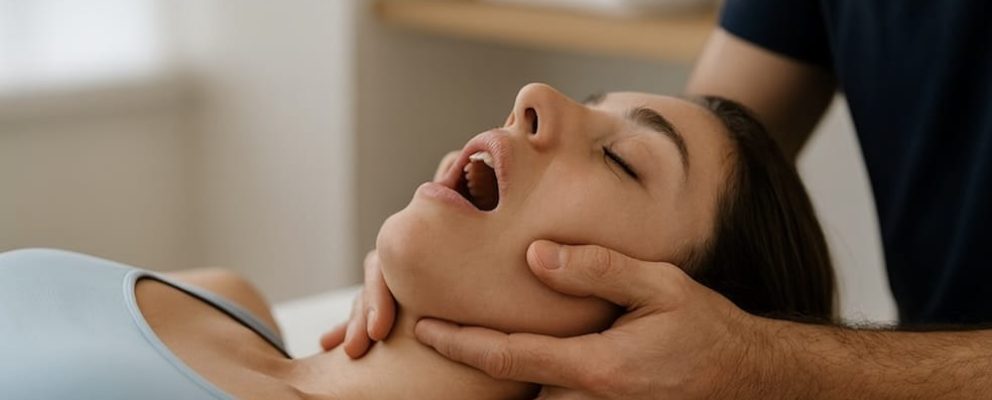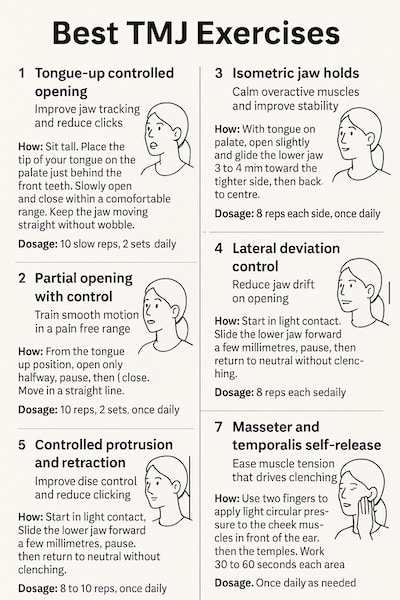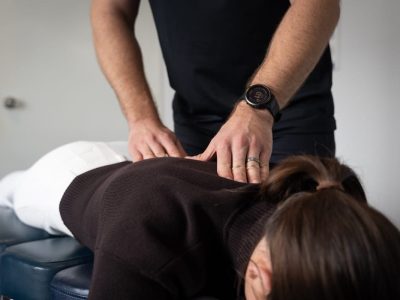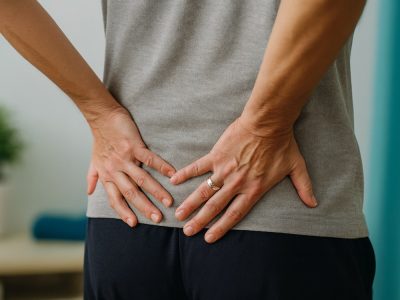Best TMJ exercises to ease jaw pain, clicking and headaches
TMJ pain usually improves with consistent, gentle control drills and better neck posture. Below are the exercises we teach most often in clinic, including clear reps and progressions. If your symptoms persist, book a TMJ assessment with our team in Shelley to get a tailored plan.
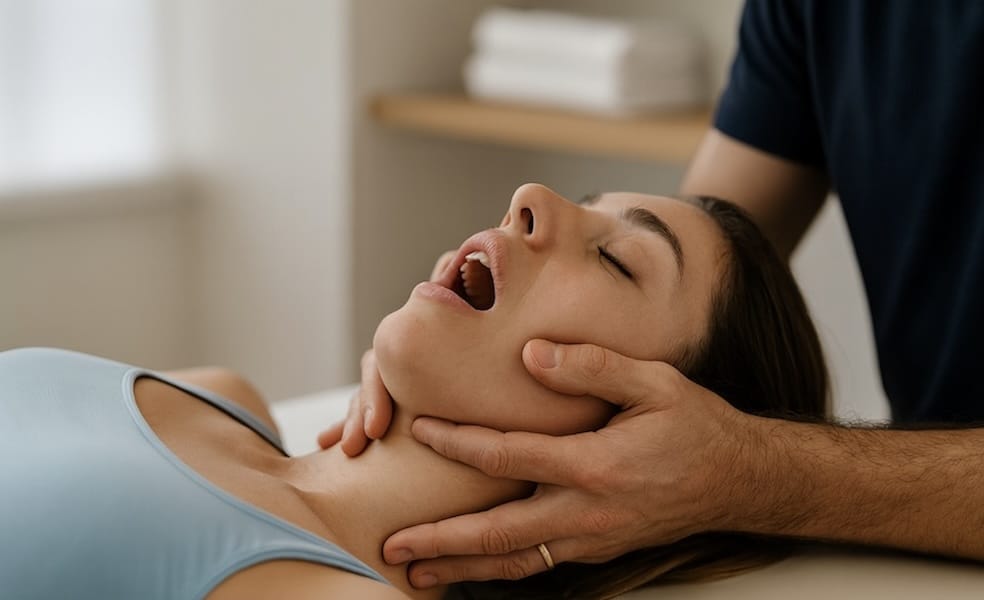
Quick wins
- Move slowly and stay below pain.
- Keep your tongue on the palate for most drills.
- Practise little and often, 5 to 10 minutes daily.
Safety checklist before you start
- Stop immediately if you get sharp pain, locking or new numbness.
- Avoid wide yawn stretches or forceful end range opening.
- If you recently had dental surgery, wait for clearance from your dentist.
- Pain that lasts more than one week or frequent locking needs a professional review. Book an assessment in Shelley.
The 7 best TMJ exercises
1) Tongue-up controlled opening
Purpose: Improve jaw tracking and reduce clicks.
How: Sit tall. Place the tip of your tongue on the palate just behind the front teeth. Slowly open and close within a comfortable range. Keep the jaw moving straight without wobble.
Dosage: 10 slow reps, 2 sets, twice daily.
Common mistakes: Letting the tongue lift off the palate. Rushing the last third of the movement.
2) Partial opening with control
Purpose: Train smooth motion in a pain free range.
How: From the tongue-up position, open only halfway, pause, then close. Move in a straight line.
Dosage: 10 reps, 2 sets, once or twice daily.
Tip: Use a mirror to keep the chin centred.
3) Isometric jaw holds
Purpose: Calm overactive muscles and improve stability.
How: Place two fingers on the chin. Gently resist opening for 5 seconds. Repeat for closing, right shift and left shift. Effort should feel light.
Dosage: 5 holds each direction, once daily.
Avoid: Hard pushing or grinding the teeth.
4) Lateral deviation control
Purpose: Reduce jaw drift on opening.
How: With tongue on palate, open slightly and glide the lower jaw 3 to 4 mm toward the tighter side, then back to centre.
Dosage: 8 reps each side, once daily.
Cue: Keep shoulders relaxed and breathe through the nose.
5) Controlled protrusion and retraction
Purpose: Improve disc control and reduce clicking.
How: Start in light contact. Slide the lower jaw forward a few millimetres, pause, then return to neutral without clenching.
Dosage: 8 to 10 reps, once daily.
Note: Stay in a small, easy range.
6) Chin tucks against a wall
Purpose: Support the jaw by improving neck alignment.
How: Stand with back to a wall. Gently draw your chin straight back to make a double chin, hold 3 seconds, relax.
Dosage: 10 reps, twice daily.
Progress: Add a soft band pull-apart for shoulder blade control.
7) Masseter and temporalis self-release
Purpose: Ease muscle tension that drives clenching.
How: Use two fingers to apply light circular pressure to the cheek muscles in front of the ear, then the temples. Work 30 to 60 seconds each area.
Dosage: Once daily as needed.
Caution: Light pressure only. Do not press on the jaw joint itself.
Weekly plan and progressions
Week 1
- Tongue-up controlled opening, partial opening, chin tucks.
- 5 to 10 minutes daily.
- Week 2
- Add isometric holds and lateral control.
- Keep reps low and quality high.
Week 3
- Add protrusion and gentle self-release.
- If clicking reduces and motion feels smooth, increase each set by 2 reps.
When to progress
- No sharp pain during or after drills.
- You can open in a straight line without deviation.
- Headaches and jaw tightness are easing through the week.
If symptoms plateau or flare, book an appointment with our expert chiropractors so we can adjust your plan and check posture, breathing and night-time load.
When to see a professional
- Jaw locks open or closed
- Opening is less than two finger widths
- Pain lasts more than one week despite rest
- Frequent headaches or ear pain without infection
- History of trauma or recent dental work that changed your bite
- Our clinicians assess jaw mechanics, neck posture and habits such as clenching or mouth breathing. Treatment may include gentle joint mobilisation, soft tissue therapy, dry needling and a graded exercise plan. Learn more on our TMJ Chiropractor page or book now via our online system.


